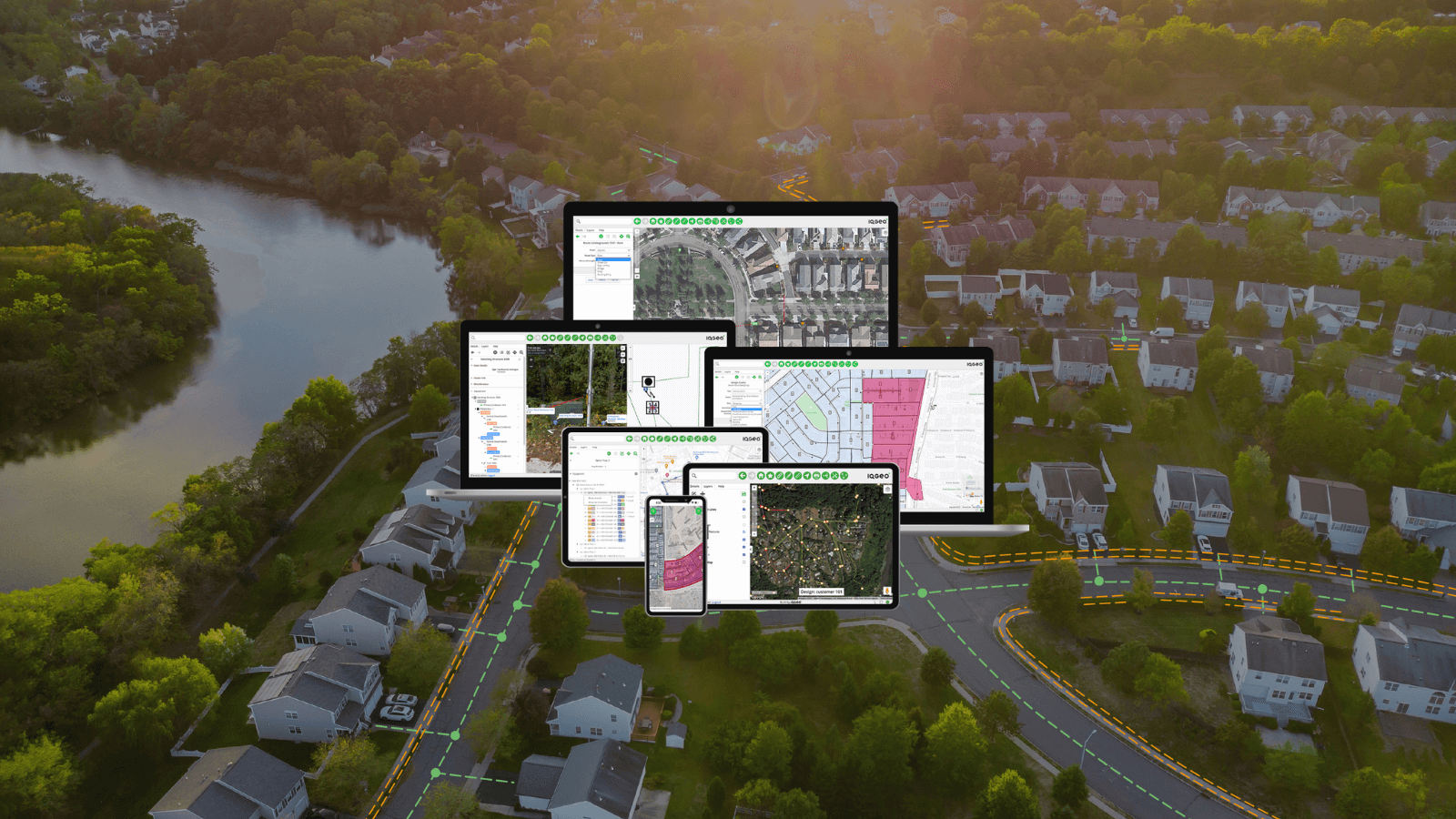While the future is uncertain, one thing that electric utilities know is that their network is changing dramatically. With distributed energy generation and electric vehicles, electricity networks will play a strategic role in creating a net-zero carbon future. The problem: network operators don’t always know the optimal ways to modernize their grid to support a renewable economy. There are simply too many evolving questions and variables.
- What are the reduction targets?
- Where are the best reduction opportunities?
- What will federal and local regulations require in the future?
- What will these changes mean to the business models and network operations?
- What are the pragmatic steps to grid modernization?
While most network operators are already embarking on decarbonization initiatives, the path forward is certainly not simple. The modern electric network will constantly evolve. Major changes are coming, and operators know they’ll need to be ready to respond quickly and flexibly. Here are some of the most significant decarbonization issues electric network operators face today:
Decarbonization regulations and targets
Regulatory mandates for decarbonization have already begun and more stringent controls will surely follow. Many changes will not be optional. Utilities can expect national reduction targets to GHG (greenhouse gases) created by electricity generation, management, transmission, and transportation. Many states and municipalities will be adding their own regulations and targets. And for Investor-Owned Utilities (IOUs), shareholders may set their own decarbonization goals, while customers will increasingly demand net-zero suppliers.
Poor resilience to climate change
Safety is becoming more important than ever as extreme weather events, from wildfires to floods, pose serious threats to the grid and to the customers who rely on it. These situations don’t just lead to potential harm; they can also result in steep fines and major reputational damage. And these increasingly frequent climate events create the potential for large scale social and economic impact as our dependency on renewable energy grids grows.
Challenges understanding the best decarbonization opportunities
Network operators often can’t access all the data and analytics required to provide a detailed picture of where GHG emissions come from and where the best reduction options lie. The data sources are spread across various teams and systems, which creates silos of information that are difficult to share and often contradictory.
The increasing complexity of a modern, integrated utility
Electric utilities must model countless potential changes to understand the scope of the network impact. Variables include energy markets and prosumers, greater interconnection with regional grids, electrification and EVs, DERs, and more. Network operators will need to model continually to constantly improve, and they are often challenged by inflexible legacy tools that hamper rapid modelling and assessment.
Maintaining grid reliability
Optimal network operations mean providing exactly as much electricity as needed at any moment. As traditional fuel sources change, network operators must develop new strategies and leverage new technology to maintain reliable service levels while also avoiding wasteful generation.
Responding to changing business models
With so much uncertainty over market conditions, predicting new business models is difficult. Future regulations, evolving technology, and changing customer demand are just some of the critical variables. How can operators model current and upcoming integrations, optimize the construction of renewable generation, decide where to deploy storage, and determine the need for new transmission interconnections? Electric utilities need the agility to quickly model new scenarios and respond rapidly to the changing landscape.
Economic challenges
Pricing for energy services must remain competitive, so operators need to be even more cognizant of costs and continue to pursue efficiencies. The grid of the future will place greater demands on reliability and resilience. These have traditionally been quite expensive to maintain, and future rate cases will need to spread costs equitably.
Changing supply
As we replace fossil fuels with electricity, consumption will grow dramatically. Such tremendous demand growth places even greater stress on the grid, in addition to the changes already noted.
These issues are very real and are likely to grow even more complex with an entire new ecosystem of technology. One thing is clear: having an accurate and timely view of the network is fundamental to all grid modernization activities. The use of legacy GIS technology simply can’t provide the agility and flexibility required by electric utilities to meet their network modernization and decarbonization targets. The solutions instead demand the key capabilities of a modern geospatial alternative.
A digital network twin that can give network operators a single geospatial view of every utility data source and system, enabling them to understand the status and role of all their assets to effectively plan, build and manage the distributed networks of the future. Keeping the network twin updated in near real-time is equally essential, as this can mitigate or eliminate the causes of asset and operational data latency and inaccuracy.
Easy-to-use tools that reduce the dependence on specialist GIS experts and instead empower cross-departmental office and field teams. This allows electric utilities to accelerate modelling of DERs and EVs, more effectively plan production hierarchies, capture field realities, and optimize workflows across the organization.
Digital transformation and mobile capability to automate workflows, enable faster data utilization, enhance data quality, and improve process efficiency. With more productive and responsive field operations, network operators can perform accurate risk management and assessment for climate events, which helps keep their customers safe and service reliable.
An agile, network-centric solution that can model and integrate future requirements, as well as continually build new workflows, so electric utilities can constantly iterate new solutions and ideas. This will allow them to effectively enhance and optimize their network well into the future.
These key capabilities are what IQGeo focused on when we created Network Manager Electric, a solution designed specifically for planning and designing modern electric networks. By delivering these capabilities through a single platform, grid modernization efforts are dramatically more agile and streamlined than legacy GIS. The IQGeo solution is based on four key principles:![]() Model anything
Model anything
Accelerate network planning and design with a digital twin of the network to efficiently model any requirement or business goal. Network operators can ensure they meet changing service level requirements with an optimized and resilient network.![]() Integrate everything
Integrate everything
Enhance collaboration and streamline processes by easily integrating any data source or internal system into a single view. This dramatically improves operational decision-making, proactive planning, and reactive response using a single, trusted view across every team.![]() Use anywhere
Use anywhere
Enable field teams to identify and document data in real time, online or offline, more powerfully and flexibly than other solutions. Best-in-class mobility ensures the rapid capture of accurate network data, which not only improves operational efficiency but also translates downstream into customer safety and network reliability. ![]() Innovate constantly
Innovate constantly
Consistently realize value from your network with a solution that enables you to continually evolve your processes, integrations, and scope. With Network Manager Electric, the entire organization benefits from a fast, flexible solution that can dynamically respond to new technology and market conditions, enabling you to incrementally enhance your network for years to come.
The traditional approach to planning and designing networks is inadequate for modernization, decarbonization, and the eventual push toward net-zero. More than ever, utilities need the ability to use a common flexible platform across the entire organization to plan, design, construct, and operate future networks. Increasing grid complexity demands agile, innovative solutions. The future of electric utility networks depends on it.
IQGeo Network Manager Electric is a game-changing geospatial solution that is optimized for electrical network operators and the new challenges they face. Learn more about what Network Manager Electric can do for you below.

Former Utilities Director at IQGeo
Similar articles:


 Previous
Previous







